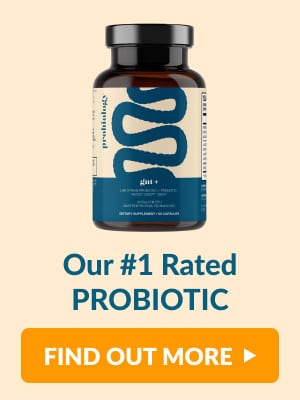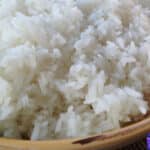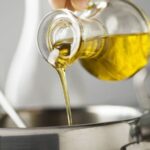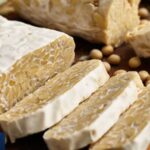The knowledge about the benefits to the health of eating probiotics frequently has grown in recent years. Research has revealed some promising outcomes. Certain cheeses can have probiotics in levels similar to and sometimes higher than yogurt. Here, we’re going to discuss the best cheese for gut health.
The World Health Organization defines probiotics as live microorganisms that confer a health benefit on the host when administered in adequate numbers. Probiotic bacteria, specifically Bifidobacteria and lactobacilli, are commonly found in human intestinal bacteria. They benefit health by increasing the intestinal microflora balance and the mucosal defenses that protect against harmful pathogens.
Other health benefits could include:
- An improved immune system.
- A decrease in serum cholesterol and vitamin synthesis.
- Anti-carcinogenic and antibacterial activity.
Anything that can increase the level of these bacteria may lower the risk of developing certain illnesses.
What Cheeses Contain Probiotics?
Probiotics can be found in cheeses that are stored for a while, but they are not heated (pasteurized) afterward. This is true for hard and soft cheeses like Swiss, Provolone, Gouda cheese, cheddar, Edam, Gruyere, and certain cottage cheeses (although most cottage cheese is made in the United States goes through a heat process.
Therefore customers must check the labels on their packages to determine whether there are active and living bacteria that could be added). Other cheeses that might have probiotics include feta caciocavallo, Emmental, and Parmesan.
Although yogurt has been researched extensively to determine the impact of its consumption routinely on health-related parameters and microbial composition, cheese has been studied primarily for its impact on taste and texture. This is because the amounts and types of bacteria influence the development of acidity and flavor in cheese. Therefore, clinical studies that study the health benefits of probiotic-containing cheeses are sporadic.
In cheeses that bacteria have ripened, such as cheddar cheese, the start microbes and those naturally present in the ripening process (i.e., nonstarter microbes) will depend upon the production conditions and the number of nutrients available during the production and ripening stages. The lactic acid bacteria found in the starters inside cheddar cheeses are stressed during production and aging, which alters their ability to live and interact with different bacterial communities.
The starter bacteria die quickly during the initial stages of ripening. This is likely due to the use of most lactose, which is why many aged, hard cheeses are deficient in lactose. As the cheese ripens, nonstarter bacteria increase slowly to become the predominant bacteria in the cheese. In the case of cheddar, these bacteria usually originate from handling milk and cheese-making equipment and even human contact during manufacturing.
One study showed that probiotic bacteria could be able to survive the entire cheese-making process and even aging, which suggests that the consumption of hard cheeses is feasible; however, generalizations are not easy; estimates of the viability of bacterial strains differ between different food and environment and also by how bacteria are evaluated.
Additionally, the capacity of some microorganisms to remain within the finished product and eventually colonize the intestines are unknown. A pilot study demonstrated that dairy-associated bacteria could be transferred to the intestine. It is colonized through drinking fresh Parmesan cheese if consumed regularly and may be enhanced through cow’s milk.
Probiotic Foods – The More Seasoned the Cheese, the Better!
Cheese is among the probiotic food items. It’s a rich source of living bacteria and mushrooms, also known as probiotics. The probiotic bacteria and fungi make up the beneficial ones in your intestinal microbiome.
There are approximately 400 species in a healthy intestinal tract, the most popular being the lactic acid bacteria. They possess excellent quality. Because they enjoy the taste of sour food, they can withstand the sharp stomach acid. You will always acquire the latest lactic acid bacteria from your food. So, you can ensure that your intestinal flora is in harmony. You may also read ; 60 Best Foods for Gut Health and Digestion: The Best Guide You Ever Need!

Best Cheese for Gut Health: 11 Fermented Cheeses that Contain Probiotics
There are many kinds of cheeses that have probiotics. Knowing the different types will enable you to make better-informed choices before purchasing.
Look at the list below for more information about these delicious healthy cheeses and their flavors.
#1. Feta
Crumbly Feta is a tasty game changer. It is traditionally made from a combination of sheep and goat milk. Alongside probiotics, this cheese with low calories also has high calcium, phosphorus, and Vitamin B content.
Feta is a fantastic appetizer or topping for salads, particularly in Greek-style
Like any full-fat dairy, Feta contains conjugated linoleic acids (CLA) CLA, which are linked to decreased body fat and improved composition.
A study of 40 overweight adults showed the consumption of 3.2 grams a day of CLA supplements for 6 months. CLA supplement for six months dramatically reduced body fat and stopped the accumulation of holiday weight when contrasted with the placebo
So, eating foods that contain CLA, like Feta, could aid in improving body composition. Indeed, Feta and other cheeses produced from sheep’s milk generally contain higher levels of CLA than other cheeses.
However, research is scarce and has mainly explicitly focused on CLA supplements.
To include the feta cheese into your diet, Try crumbling it onto salads and eggs, adding it to them or whipping it up into dip to enjoy alongside fresh veggies.
#2. Swiss
Swiss is most well-known for its distinctive appearance, with holes, which earned it the name “eyes.”
While the cheese has a relatively strong scent, the taste is mild, with a few sweet and nutty notes. Swiss is an excellent choice for sandwiches and hamburgers.
Because it is less high in sodium and cholesterol than many other types of cheese, Swiss cheeses are often advised for those who have to be aware of their salt or fat consumption, like those with high blood pressure.
ACE narrows blood vessels and increases blood pressure in your body. Hence, the substances that suppress it can assist in lowering blood pressure.
Most research about the effect of Swiss cheese components on blood pressure is limited to test tubes.
To include Swiss cheese in your diet, consume it alongside fruit or put it in eggs bakes, sandwiches, burgers, or French onion soup.
#3. Gouda
Gouda is a lavish semi-hard cheese that is an excellent addition to boards. It is a robust yet slightly nutty flavor, most notably in the case of smoked gouda.
This cheese type is high in calcium and has the most probiotics of all of the cheeses on this list.
#4. Edam
Edam is a different cheese that ages like fine wines. Its delicate flavor and soft texture will get more refined with time. Serve it with a glass of Malbec or Chardonnay to create an excellent appetizer.
Furthermore, while Edam is savory, Edam has probiotics and high sodium levels.
#5. Caciocavallo
The Southern Italian staple has a bitter and slightly salty flavor. Caciocavallo can be enjoyed on its own or sprinkled on top of pasta. The method of the way this gourd-shaped cheese is created is similar to the process used in making Mozzarella.
#6. Emmental
Similar to Swiss cheese. Emmental is characterized by similar holes and has a pale yellow-colored color. Emmental has a pleasing smell and delicate, sweet taste.
Emmental is well-known for its speedy melting characteristics, which makes it among the top cheeses to use in fondue. Emmental can be incorporated into sandwiches, burgers or salads.
#7. Gruyere
Gruyere is well-known for its rich and delicious flavors that get stronger with you the passage of time. It’s an excellent accompaniment to a charcuterie platter and is particularly delicious with fruits that enhance the cheese’s unique flavor.
Gruyere is also very simple to melt, thereby serving as an alternative option for serving fondue.
#8. Cottage Cheese
Cottage cheese is an excellent source of health benefits, which is why it’s often a must for a wide range of diets.
Low in fat, it contains significant quantities of protein, calcium, selenium, and calcium, along with Vitamin B. Soft cheeses have a subtle general flavor but a strong scent.
#9. Parmesan Cheese
Parmesan, typically known as Parmigiano-Reggiano, is a spicy and delicious cheese in Lombardy, Italy.
The cheese is primarily recognized for its gratings as a pizza or pasta topping. However, served on its own makes an excellent appetizer, paired with crackers with a glass of Pinot Grigio.
One ounce (28-gram) serving also has nearly 30 percent of RDI for the mineral phosphorus.
Because Parmesan is a rich source of two minerals, calcium, as well as Phosphorusnutrients that play a part in the formation of bones, it can help improve bone health.
One study with 5 000 healthy Korean adults showed that higher intakes of calcium and phosphorus were strongly linked to higher bone mass in particular body regions, for example, the femur. It is the longest bone in human anatomy.
In addition, because it has been stored for an extended period, Parmesan is very low in lactose and is generally accepted by most people with lactose intolerance.
Grated Parmesan can be used in pizzas, pastas, and other dishes. It can also be sprinkled on eggs or slices of cheese on a board with nuts and fruit.
#10. Provolone
Provolone is another delectable Southern Italian cheese with a sharp flavor characterized by spicy and nutty notes.
Cheese can be used in various dishes, such as sandwiches or pizza, but it is delicious. Enjoy it with a slice of soppressata and an ice-cold glass of Chianti. Soft, buttery and a little tangy
The product is well-melted, ideal for sandwiches
#11. Raw Unpasteurized Cheddar
Raw cheddar is packed with this cheese’s incredible benefits, such as probiotics. It also has high levels of protein, calcium, and healthy fats.
The mild yet sharp flavor can be a great addition to many food items. You can add cheddar cheese to your burgers for your next barbecue, and it’s sure to make a splash with the crowd.
Additionally, it is rich in calcium and protein. The cheddar cheese is a fantastic food source for vitamins, particularly Vitamin K2.
Vitamin K is vital for bone and heart health. It helps prevent calcium from getting trapped inside cells of veins and arteries. Inadequate vitamin K levels can result in calcium accumulation, thereby reducing blood flow, resulting in an increased chance of heart disease.
Getting enough vitamin K from your diet is essential to avoid calcium deposits. Because K2 in animal food is more easily absorbed than K1 within plants, it is believed that K2 could be crucial in preventing heart disease.
Indeed an investigation of more than 16,000 women in adulthood found that a higher intake of vitamin K2 to a lower chance of developing heart diseases after 8 years.
Consuming cheddar is one method to boost the amount of vitamin K2 you consume. It can be added to the charcuterie plate, vegetable dishes, burgers, and eggs.
Read More:
Best Over the Counter Probiotic for Gut Health: Easy Guide 2022
Choosing The Best Cheese for Gut Health
Cheese could be an excellent means of delivering probiotic microorganisms to the intestine because of its distinct physical and chemical characteristics when compared to fermented milk (i.e., thanks to lower levels of acidity, higher fat content, more excellent nutritional content, lower concentration of oxygen and a more dense texture). However, very few cheeses contain probiotics in the amount required to provide a benefit.
Also, it’s essential to remember that just because a food product is fermented doesn’t guarantee a live culture in the quantities required to give health benefits. To provide health benefits, probiotics should be present in food products that are above an optimum level, which is a minimum that is 106 colonies-forming units (CFUs) in a milliliter or gram, and in total, up to 108 CFUs from probiotic microorganisms must be consumed every day to achieve the probiotic effect. However, only a handful of food items like cheese are required to state the amounts of probiotics they offer on their label.
Most probiotic food items being sold, like yogurt and fermented milk, are fresh and typically consumed within a couple of days or weeks after manufacturing. However, some hard cheeses, like cheddar, are ripe for a long time. Times that can last up to two years. However, prior studies have demonstrated that probiotics thrive in cheddar and Gouda cheeses. There are also cheeses with probiotics added to them after processing.
Raw Milk Cheese
Microbiological and chemical analyses have shown that cheeses made from raw milk are generally more sophisticated and delicious than pasteurized cheeses. Pasteurization eliminates much of the milk’s natural bacteria responsible for developing flavor. However, the current FDA guidelines state that any cheese that the United States produces must be either made with pasteurized milk or stored for 60 days in the hope the harmful microbes will be eliminated within that period. If handled correctly.
The cheese made from fresh milk can be safe with the proper safety protocols. It uses bacterial cultures to reduce the pH to a point where, in some cheeses, pathogens can’t thrive. The process involves heating curds across various cheese types. This gives a similar amount of protection when the cheese is made of pasteurized milk.
What About Processed Cheese?
Processed cheese can be processed food containing cheese and unfermented dairy ingredients mingled with emulsifiers. Other ingredients can be added, like salt, vegetable oils, sugar, or food coloring. This is why a variety of flavors, as well as textures, colors and colors of processed cheese, are available. Since they’re made of non-fermented dairy ingredients, pasteurized processing cheese, processed cheese food, and pasteurized processed cheese spread are not probiotic-free.
Scientific Studies and References
- Harvard Medical School
- Watras AC, Buchholz AC, Close RN, Zhang Z, Schoeller DA. The role of conjugated linoleic acid in reducing body fat and preventing holiday weight gain. Int J Obes (Lond). 2007 Mar;31(3):481-7. doi: 10.1038/sj.ijo.0803437. Epub 2006 Aug 22. PMID: 16924272.
-
Bütikofer U, Meyer J, Sieber R, Walther B, Wechsler D. Occurrence of the angiotensin-converting enzyme inhibiting tripeptides Val-Pro-Pro and Ile-Pro-Pro in different cheese varieties of Swiss origin. J Dairy Sci. 2008 Jan;91(1):29-38. doi: 10.3168/jds.2007-0413. PMID: 18096922.
- MedicalNewsToday
- Cheung AM, Tile L, Lee Y, Tomlinson G, Hawker G, Scher J, Hu H, Vieth R, Thompson L, Jamal S, Josse R. Vitamin K supplementation in postmenopausal women with osteopenia (ECKO trial): a randomized controlled trial. PLoS Med. 2008 Oct 14;5(10):e196. doi: 10.1371/journal.pmed.0050196. Erratum in: PLoS Med. 2008 Dec;5(12):e247. PMID: 18922041; PMCID: PMC2566998.
- WebMD
Read More:
Best Milk for Gut Health: 5 Healthiest Milks for Gut Health




![What Happens If You Eat Too Many Tomatoes? Alarming Facts [2022]](https://tiptopgut.com/wp-content/uploads/2022/10/What-happens-if-you-eat-too-many-tomatoes--440x264.jpg)












